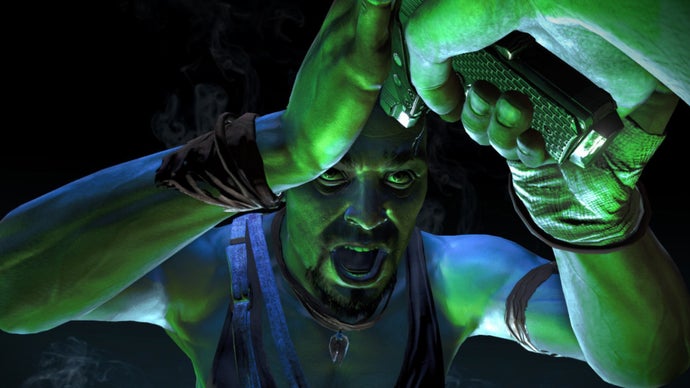
Far Cry is set to be turned into a live-action TV series on FX, something Ubisoft reportedly let slip back in August, but has now been formally announced by the publisher in a post that’s yet to be randomly zapped into the ether.

Far Cry is set to be turned into a live-action TV series on FX, something Ubisoft reportedly let slip back in August, but has now been formally announced by the publisher in a post that’s yet to be randomly zapped into the ether.
Update: Fans might not have to wait much longer…
In case you missed it, it’s been announced Pac-Man is joining the Sonic Racing: CrossWorlds Season Pass.
Pac-Man and the “iconic rival ghosts” will link up with not only Sonic’s crew but also characters from other Sega universes and beyond (including Minecraft, SpongeBob, and more). Apart from this, there will also be a track inspired by Pac-Man’s modern and classic arcade-era titles.
Read the full article on nintendolife.com
Including 296 tracks and over 6 hours of music.
If you’ve enjoyed the beats in Super Mario Party Jamboree and want to be able to listen to them wherever you go, the game’s soundtrack has now been added to the Nintendo Music app.
This one is an absolutely huge soundtrack, featuring a whopping 296 tracks with a runtime of 6 hours and 30 minutes in total. Nintendo also notes how this includes music from the Nintendo Switch 2 Edition + Jamboree TV.
Read the full article on nintendolife.com
Hello everyone, we’re CrazyPotato Studio, and we’re thrilled to introduce our passion project — Cat God Ranch — to the Xbox community. Launching on November 20, 2025, for Xbox One, Xbox Series X|S and Windows PC (with Xbox Play Anywhere support), this game is a fresh take on the roguelite genre, combining strategic deckbuilding with the charm of animal ranch management.
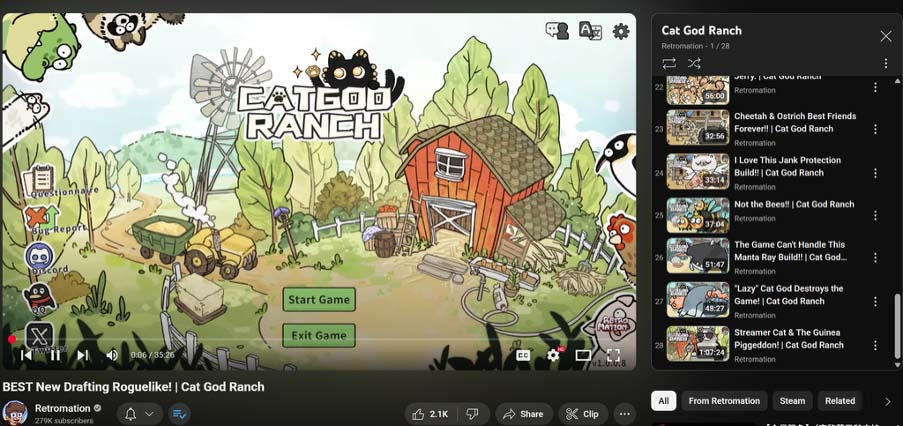
When we formed our studio, we knew we wanted to create a roguelike game. Not only is the genre more manageable for a small team, but it’s also one we deeply love. We’ve spent countless hours playing roguelikes like Brotato, Balatro, and Slay the Spire.
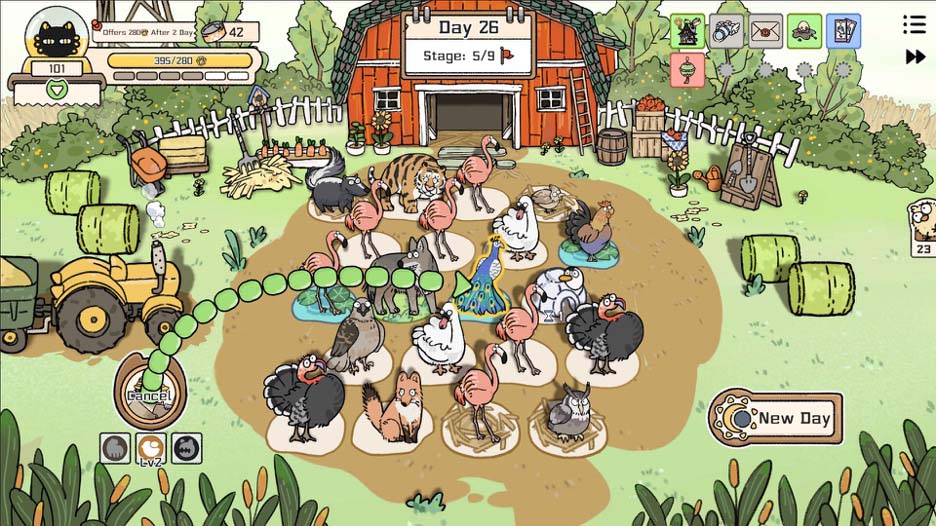
Cat God Ranch draws significant inspiration from Luck be a Landlord, and while the core mechanics share similarities, we’ve added our own twists and improvements
For example, we allow players to freely choose three families to bring into the game, primarily to prevent the card pool from expanding excessively and to facilitate future updates. We currently have eight families, and even if we increase this to ten families in the future, it won’t affect the spawn probability of individual animals. Furthermore, placing all animals into one large pool would limit both playability and creative freedom. We want you to be able to mix and match families according to your own ideas, further enhancing the game’s replayability.
For every type of extinct animal, we designed highlight moments for them to heighten the game’s excitement to deliver a uniquely thrilling experience. Take the Phorusrhacos, for instance. Its design aims to instil a sense of dread, so we made it capable of removing all other small animals upon entering the field and absorbing their contributions. This mechanic transforms it into a pivotal moment that drives the game’s pace and amplifies the emotional intensity.
Another example is Smilodon. It’s like an upgraded version of a tiger, but it leaves leftover meat after eating. While it looks less formidable than Phorusrhacos, when paired with mice, it can ignore distance and devour every animal on the field—a true highlight moment.
Besides the highlight moments, there are many more different builds to explore. For example, you can get an army of expensive Peacocks to get rich, allow Chimpunks to breed unchecked, or even discover more fun with prehistoric creatures in the latest DLC.
Our goal was simple: create a fun roguelike game filled with adorable animals. Since launching on PC, more than 100,000 players have supported us—and we can’t thank you enough. Now, we’re thrilled to bring Cat God Ranch to Xbox players. Thank you all for joining us on this wild, animal-filled adventure!

E-Home Entertainment Development Company Ltd
New Content – Age of Dinosaurs
New Content is included in this version! New rainforest scenario, 20+ dinosaurs, 20+ items, 2 cat gods, 10+ achievements, and more.
Manage Your Ranch
Take on the role of ranch manager and grow your fledgling herd of animals into one worthy of pleasing the Cat God! There are many different paths to choose from, but only one hurdle to overcome at the end of each week. Pay tribute to the Cat God or face his wrath and have your ranch shut down.
100+ Animals with Unique Abilities of 8 Families
Whether it’s alpacas, crocodiles, hyenas, larks, or a combination of all, you choose the kind of ranch you want to build. Feed your barnyard buddies to the carnivores, or watch an army of penguins and pandas propagate across your ranch.
Utilize Different Terrains and Watch Your Animals Thrive
Combine grasslands, caves, puddles, and other tile cards to create endless possibilities and combos.
Tango with 100+ Prop Cards to Make Tribute in Time!
As you improve on your ranch, the Cat God will bestow you with prop cards. Add these modifiers to your daily earnings and watch them grow!
With 10+ cat gods, 100+ animals, 100+ props, 20+ toys, and 10+ tiles, it’s time to build your own unique deck and appease the Cat God!
The post Cat God Ranch: Deck-Building Meets Animal Ranch Management appeared first on Xbox Wire.

As the darkness of winter descends and people are driven to gather indoors for the holidays, it suddenly becomes a lot more important to have good board games on hand. If your board game shelf is looking a little barren, worry not; Amazon’s Black Friday sale has the excellent Azul for just $21.49 – a 33% drop from its usual price.
For the uninitiated, Azul is a strategic tile placement game in which two to four players are tasked with creating mosaics to win. It’s on IGN’s best beginner board games list – so at over $10 off, if you’ve never tried it, now is a good time.
Azul made our list of best board game classics for good reason. In our review, writer Matt Thrower said that, “Between its beautiful presentation, simplicity and depth there’s little doubt that Azul has earned its place as a modern classic.” And at this price? It’s certainly worth picking up for your board game collection.
If you’re looking for more board game deals, there’s plenty to explore from non-Amazon Black Friday sales. At the moment, Target has a ‘Buy 1 Get 1 50% off Board Games and Puzzles’ offer going on as part of its Black Friday sale, and other deals will surely pop up as the week continues. For more, check out our full breakdown of Black Friday 2025.
Hannah Hoolihan is a freelancer who writes with the guides and commerce teams here at IGN.

Black Friday is one of the best times of year to pick up board games, full of great discounts to peruse. Among them is the 6th Edition of Catan, available from Amazon and Target for $24.99, a more than 50% discount.
Catan is meant to be played with three-to-four players aged 10 and up, perfect for holiday game nights with family or friends. As you play, you’ll trade resources and construct roads and settlements in a race to 10 points. We rank it among the best classic board games to play overall, and it’s still one of the best strategy board games in 2025.
There’s more where that came from. Amazon’s Black Friday sale features quite a few other board games, while Target has a ‘Buy 1 Get 1 50% off Board Games and Puzzles’ offer going on as part of its own sale. For a look at other retailers’ current and upcoming holiday deals, check out our full breakdown of this year’s Black Friday sales.
Hannah Hoolihan is a freelancer who writes with the guides and commerce teams here at IGN.

Far Cry is taking its special brand of mayhem to FX and streaming service Hulu with a new series based on the games. Alien Earth’s Noah Hawley is producing with It’s Always Sunny in Philadelphia’s Rob Mac starring and producing.
“What I love about the Far Cry game franchise is it’s an anthology. Each game is a variation of a theme, the same way each season of Fargo is a variation on a theme,” said Hawley.
“To create a big action show that can change from year to year, while always exploring the nature of humanity through this complex and chaotic lens is a dream come true. I’m excited to partner with Rob and bring our shared irreverent, ambitious sensibility to the screen.”
The plan is for each season of the show to take on a new setting, similar to the games with Mac in the starring role. Details on the release date or content are still under wraps, but the games have given us everything from Montana, USA to the Himalayas and cults, insane dictators and pirates, so there’s plenty to work with.
“Getting to work alongside Noah Hawley is a dream realized,” added Mac, who also worked with Ubisoft on Apple’s Mythic Quest, where he played a game developer.
“Ubisoft has been remarkably generous, entrusting us with one of the most iconic video-game worlds ever created. And through it all, my FX family continues to lift me up with their constant belief and support.”
Rachel Weber is the Senior Editorial Director of Games at IGN and an elder millennial. She’s been a professional nerd since 2006 when she got her start on Official PlayStation Magazine in the UK, and has since worked for GamesIndustry.Biz, Rolling Stone and GamesRadar. She loves horror, horror movies, horror games, and French Bulldogs. Those extra wrinkles on her face are thanks to going time blind and staying up too late finishing every sidequest in RPGs like Fallout and Witcher 3.
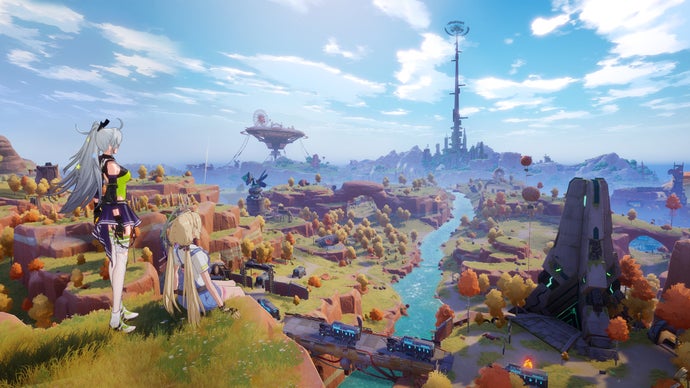
Remember Tower of Fantasy? It was one of those Genshin Impact-ish gacha games, with its particular twist, so to speak, being that it’s sort of an MMO. I say sort of, because it’s described as a shared open world, meaning you can see other players, and there are some MMO elements, but its monetisations are much more gacha like. Or, well, they are until tomorrow, November 25th, as in quite a big move developer Hotta Studio is stripping Tower of Fantasy of all of its gacha elements.
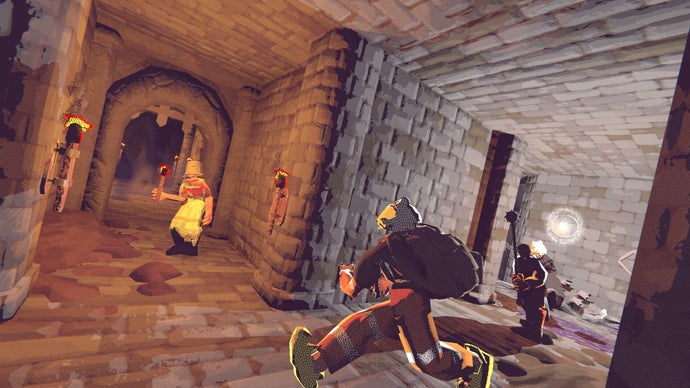
Look, I have my fair share of problems with Palworld, but to give credit where credit is due, after announcing their foray into publishing earlier this year, they’ve lined up a suite of games. Dead Take, a psychological horror complete with Baldur’s Gate 3‘s Neil Newbon and Final Fantasy 16’s Ben Starr, launched earlier this year, Truckful just looks like a delight, and now there’s Vision Quench, a game for freaks like me who like it when fantasy gets a bit techy.
For some reason.
Nintendo’s weekly maintenance schedule has been released, and weirdly, the only console getting any love this week is the Nintendo 3DS.
Reported on by Nintendo Everything, the Nintendo 3DS’s available network services will be down between 3pm PST to 4:30pm PST today, 24th November 2025.
Read the full article on nintendolife.com